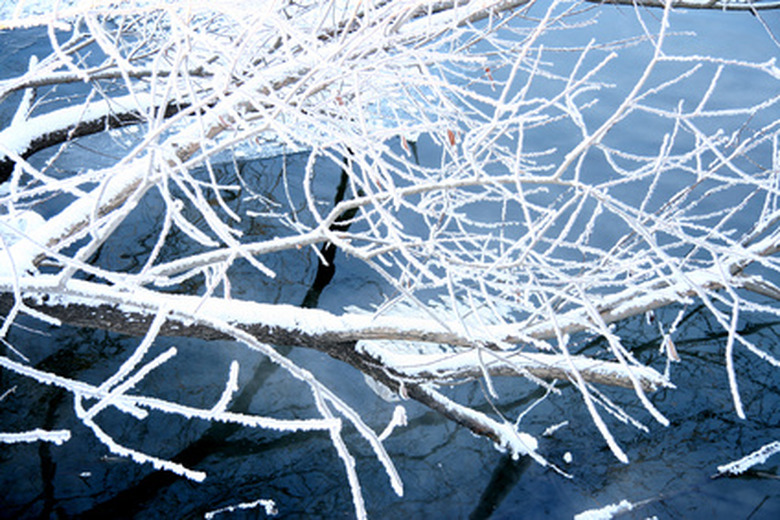A Comparison Of Bradford And Cleveland Pear Trees
Native to Korea and Japan, the ornamental pear tree (Pyrus calleryana) is one of the most favored ornamental trees among homeowners and landscapers alike. The tree's adaptability, versatility and year-round beauty contribute to its popularity. The Bradford pear and the Cleveland pear are two varieties of Pyrus calleryana. Though they possess many similar characteristics, the few traits that differ between the two are significant.
Size and Shape
The Bradford pear grows rapidly to a height of 30 to 50 feet and a spread of 20 to 30 feet. It has an erect, oval-shaped canopy. The Cleveland pear, also a rapid grower, is a tad smaller, reaching 30 to 40 feet high and 15 feet wide at maturity. It grows more upright than the Bradford pear and has an attractive pyramidal form. Both are an ideal size for small to medium yards.
- Native to Korea and Japan, the ornamental pear tree (Pyrus calleryana) is one of the most favored ornamental trees among homeowners and landscapers alike.
- The Cleveland pear, also a rapid grower, is a tad smaller, reaching 30 to 40 feet high and 15 feet wide at maturity.
Branch Structure
The Bradford pear is genetically flawed in terms of branch structure. The angles between the Bradford's branches and trunk are too narrow. Consequently, as the branches increase in girth, their point of attachment to the trunk weakens. High winds, ice and snow will frequently send the limbs crashing to the ground and in some cases actually split the tree in two. The branches of the Cleveland pear are more evenly spaced and closer together. As a result, the Cleveland holds up better in severe weather.
Flowers and Leaves
Both the Bradford and Cleveland pear bloom profusely in early spring. The white flowers are showy, but their smell can be quite offensive. The Cleveland tends to bloom more heavily than the Bradford. Each tree has dark green, glossy leaves that produce magnificent shade in the summer. Both trees provide fall leaf colors of red, orange and purple, but the Bradford is the more vibrant autumn performer of the two.
- The Bradford pear is genetically flawed in terms of branch structure.
- The angles between the Bradford's branches and trunk are too narrow.
Growing Conditions
Bradford and Cleveland pears are both highly adaptable to a variety of growing conditions. The Cleveland pear is hardy in USDA Zones 4 to 8. The Bradford pear is a bit more cold sensitive and is hardy to Zone 5 rather than Zone 4. Both trees prefer full sun and moist, well-drained soil but will tolerate poor soils, clay soils and soils of various acidity and alkalinity. They are drought, heat, pollution and disease resistant.
Function
The Cleveland pear is often used as a specimen tree, focal point, shade tree or street tree. Although the Bradford pear may function in the same manner as the Cleveland, it is not recommended. According to the School of Horticulture and Crop Science at Ohio State University, the Bradford pear "should absolutely not be used today with the availability of better-branched and more upright cultivars." Some environmentalists are recommending that neither of the varieties be planted because both ornamental pears have been proven to be invasive and a risk to native tree specimens.
- Bradford and Cleveland pears are both highly adaptable to a variety of growing conditions.
- According to the School of Horticulture and Crop Science at Ohio State University, the Bradford pear "should absolutely not be used today with the availability of better-branched and more upright cultivars."
